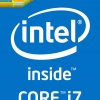How to review a motherboard?
Write all you have to say and each topic clearly before shooting, you need to say everything fast smooth and straight up.
Cover what people actually wants to see, included accessories, features that actually matter and make a difference that this board has and most of the others one don't. Read spec sheets and stuff on the gigabyte website and see what they didn't include, many times they skip telling the consumer what controllers they used (example: audio, network), also talk about expansion and description of each lane, gigabyte is always unclear with that; then mention the non-included stuff. Reading stuff on the box that we can get on the website or any other overview videos is bad and boring for your review.
Other important thing is how is the performance on the board regarding voltage regulation, stability and temperatures. Do some tests and show useful results about it, like temps on the board itself, usefulness of the bios when trying to do a proper setup and more.
Keep your video short (4-7 min), and most important, don't even bother doing it if you don't have proper audio, these videos depend mostly of the audio and your voice.







.thumb.jpg.41b364c91d47256e4c681dda232b92f9.jpg)


.thumb.jpg.2d9f94eef978a5991ceb131700de9a3f.jpg)










Create an account or sign in to comment
You need to be a member in order to leave a comment
Create an account
Sign up for a new account in our community. It's easy!
Register a new accountSign in
Already have an account? Sign in here.
Sign In Now